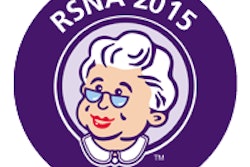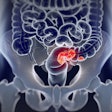
When reimbursement codes for CT of the abdomen and pelvis were bundled in 2011, there was a dramatic 29% reduction in imaging payments for these procedures, according to a study in the May issue of the American Journal of Roentgenology. Radiologists were the most affected, concluded the researchers from Thomas Jefferson University.
Although the U.S. Centers for Medicare and Medicaid Services (CMS) may view this as success in its efforts to curb healthcare costs, the agency may not have considered the policy's long-term consequences, according to lead author Dr. David C. Levin, Dr. Vijay Rao, and Laurence Parker, PhD.
"Radiology has been hard-hit by reimbursement reductions," Levin and colleagues wrote. "[This CT code bundling] is another example of a major cut, the magnitude of which may not have been fully anticipated. Although CMS will see this as helpful in their efforts to reduce healthcare costs, it could also lead to an adverse outcome -- a loss of patient access to CT if payments continue to be reduced to the point at which providers can no longer cover their costs."
 Dr. David C. Levin.
Dr. David C. Levin.
What just happened?
Before 2011, when CT scans of the abdomen and pelvis were performed together, two separate CPT codes were submitted on a claim form. In January 2011, the codes were bundled together, but the technical and professional relative value units (RVUs) for the new bundled code were substantially less than the sum of the RVUs for the two separate codes filed together, according to Levin's team.
For example, the professional component RVU for contrast-enhanced CT of the abdomen and pelvis was 3.58 for claims filed separately; for the new bundled code, the professional component was 2.61, a decrease of 27%.
"Because CT examinations of the abdomen and pelvis are widely performed, this change could be expected to have a substantial impact on imaging reimbursements," Levin and colleagues wrote.
For the study, the group used the nationwide 2001-2011 Medicare Part B data files to select the codes for CT of the abdomen and pelvis before and after bundling occurred. The researchers then determined procedure volumes and calculated utilization rates per 1,000 Medicare beneficiaries (AJR, May 2014, Vol. 202:5, pp. 1069-1071).
In 2011, before the codes were bundled, overall procedure volume of CT of the two body regions was approximately the same as in 2010. But once the codes were combined, the total rate of the two procedures per 1,000 Medicare beneficiaries decreased from 277.1 to 148.1.
"However, if the new bundled examinations had been counted twice, as they would have in 2010 and earlier, the total utilization rate in 2011 would have been 278.7, virtually unchanged from the 2010 rate of 277.1," the authors wrote.
| Rate of abdominal and pelvic CT per 1,000 Medicare beneficiaries | |||||
| Procedure | 2001 | 2004 | 2007 | 2010 | 2011 |
| CT of abdomen | 92.1 | 121.2 | 143.1 | 143.7 | 12.6 |
| CT of pelvis | 71.5 | 103.9 | 131.4 | 134.4 | 4.9 |
| CT of abdomen and pelvis | -- | -- | -- | -- | 130.6 |
| Total | 163.7 | 225.1 | 274.1 | 277.1 | 148.1 |
Medicare reimbursement for CT of the abdomen and pelvis had risen steadily from 2001 to 2005, remaining relatively stable thereafter through 2010. However, in 2011, total reimbursement decreased from $971.5 million in the previous year to $687.0 million -- a drop of $284.5 million (29%) in a single year. Radiologists sustained $218.6 million of this decrease.
"Because the utilization rate would have remained virtually unchanged in 2011 under the old coding method, the decrease was largely due to code bundling and the new lower RVU levels," Levin and colleagues wrote.
 Dr. Vijay Rao.
Dr. Vijay Rao.
Most of the reimbursement for CT of the abdomen and pelvis is paid to radiologists, so they were most affected by the cuts. Radiologists' total Medicare reimbursement of $800 million for services in 2010 fell to $581.4 million in 2011, a decrease of $218.6 million, or 27%.
The $284.5 million reduction in Medicare reimbursement for CT of the abdomen and pelvis amounted to a 3% reduction in all payments for all noninvasive diagnostic imaging from 2010 to 2011, the authors wrote. On top of this, when the American Taxpayer Relief Act of 2012 was passed, it increased the assumed utilization rate for imaging equipment costing more than $1 million from 75% to 90%; the change caused consternation among radiologists, as it was projected to cut $800 million from imaging reimbursements over the next decade.
But the impact of the utilization rate change is a drop in the bucket compared to the effects of CT code bundling, according to Levin and colleagues.
"This figure is dwarfed by the reduction of $284.5 million in a single year, resulting to a great extent from this single instance of code bundling -- a reduction that will continue every year into the future," they wrote.
Cuts resulting from the Deficit Reduction Act (DRA) of 2005, multiple procedure payment reductions, practice expense revaluation, and the increased equipment utilization factor have mostly affected technical component reimbursement and, therefore, did not greatly affect hospital-based radiologists, the authors wrote. Code bundling, however, will affect radiologists in hospitals because it applies to the professional component in addition to the technical component.
"Code bundling is slated to continue in other aspects of imaging and imaging-guided interventions, and it is apparent that this will represent another serious financial threat to the field," Levin and colleagues concluded.





















